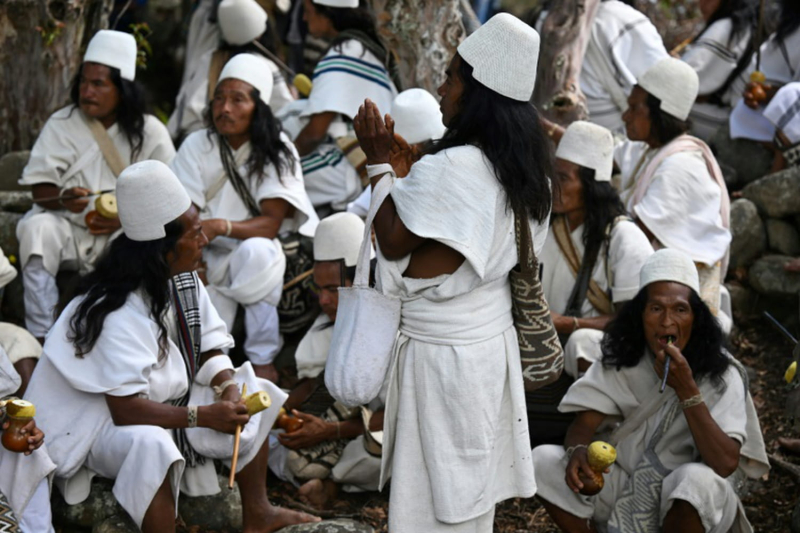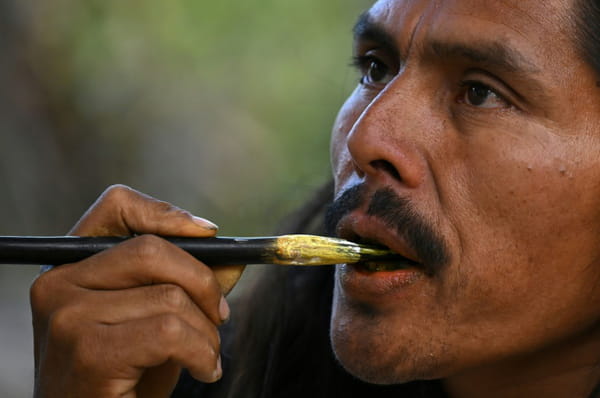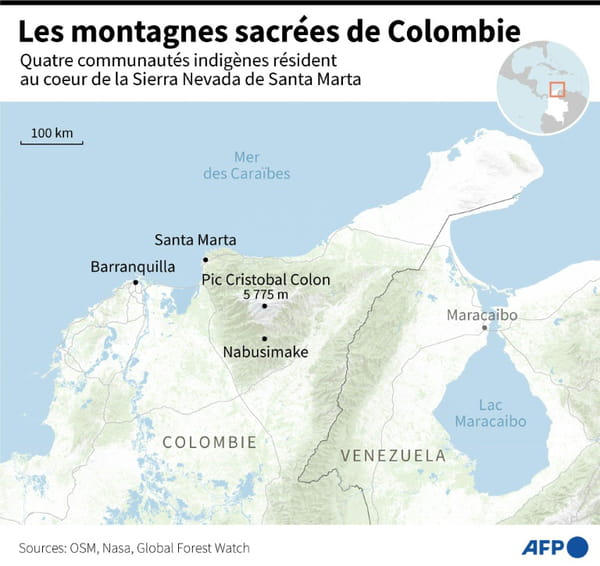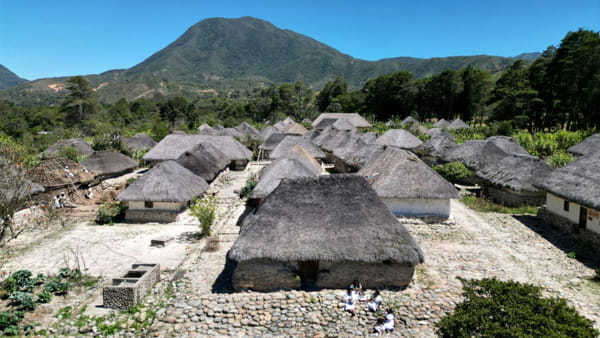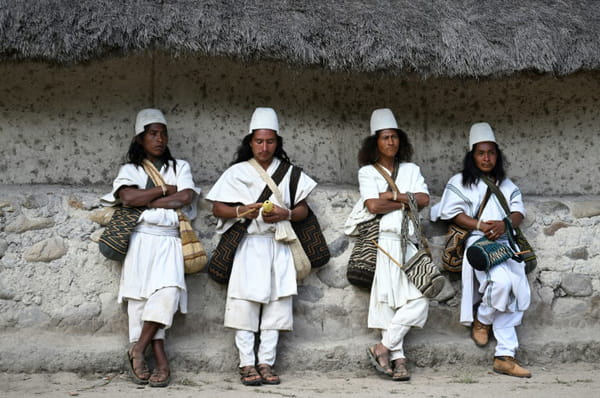In the shade of a sacred tree, in the heart of the Colombian Sierra Nevada, wise men of the Arhuaco people speak with concern about the future of the highest mountain. Here are the world's coastal mountains, whose summits are less and less snow-capped. With a wooden rod between their lips, then rubbed against a gourd to breathe their thoughts into it, the spiritual leaders of this indigenous community, called “mamos”, note climate change in their environment, a vast mountainous territory bordered by the Caribbean Sea . An Arhuaco native ingests lime made from crushed shellfish, February 11, 2024 in the Sierra Nevada, Colombia © AFP – Raul ARBOLEDA As a “consequence of human activities, it gets a little hotter every year”, said one of them, according to Angel Manuel Izquierdo, an indigenous person who reported to AFP the exchanges in the Iku language during this meeting organized in the village of Nabusimake, in the commune of Pueblo Bello, at some 1,900 meters above sea level. Of the 14 tropical glaciers that existed in Colombia at the beginning of the 20th century, only six remain, according to official data. The sacred mountains of Colombia © AFP – Gustavo IZUS, Gabriela VAZ The glacial area of the Sierra Nevada de Santa Marta, which peaks at 5,775 meters, has increased from 82 km2 in the mid-19th century to 5.3 km2 in 2022, according to the Colombian Meteorological Institute. Four indigenous communities, Arhuaco, Wiwa, Kogui and Kankuamo, live in these mountains at the northern end of the Andes, whose lowlands covered with tropical forests leave gradually gives way to savannahs at altitude, then thorny forests. -“live in peace”- The mamos fear that the man “will disappear, by his own invention, nothing could be simpler. Thinking that he is very intelligent”, reports Angel Manuel Izquierdo. Nabusimake, the spiritual capital of the indigenous Arhuaco people, in the Sierra Nevada de Santa Marta, Colombia, February 10, 2024 © AFP – Raul ARBOLEDA “We are here to live in peace, in harmony (with the land),” say the Arhuaco spiritual leaders during this meeting in which other indigenous communities also participate. Dressed in hand-woven white tunics and hats, the spiritual leaders exchange toasted coca leaves, with stimulating properties, while greeting each other, as they do at every new meeting. Checked with lime, they transform into a kind of clay used to “write” their thoughts on small gourd pots which accompany them from the wedding to the dead. “Global warming and the climate crisis are widespread. All the perpetual glaciers that existed in the Sierra Nevada are disappearing,” warns Leonor Zalabata, the first indigenous person to represent Colombia at the UN. Arhuaco indigenous people in Nabusimake, in the Sierra Nevada de Santa Marta, February 10, 2024 in Colombia © AFP – Raul ARBOLEDA “Nabusimake was much colder. Before, there was no coffee, no bananas, no cassava. And now there is,” underlines Seydin Aty Rosado, one of the chiefs of this village of 8,000 inhabitants. In January, the environmental authority recorded a record temperature of 40°C in the coastal town of Santa Marta, at the foot of the Sierra Nevada. -“Mother Earth”- During this episode, the midday heatwave alternated with morning frosts which ruined the crops. The natives hope that this extreme climate will subside in March and that they will be able to plant beans, cabbage and corn. “This is a response to what we, human beings, we gave to Mother Earth,” assures Seydin Aty Rosado, thread and needle in hand. An arhuaco indigenous person in Nabusimake in the Sierra Nevada de Santa Marta, February 11, 2024 in Colombia © AFP – Raul ARBOLEDA These concerns are recorded in the bag she weaves: “Here is our past, our present and our future. When I weave, I speak and think of my children. Everything is recorded here, in the bag”. The women of the community weave these bags from a very young age. Also among the concerns of the Arhuacos , the presence in the region since last year of paramilitary groups and criminal gangs linked to drug trafficking, while peace talks with the government of President Gustavo Petro are at an impasse. “This crisis threatens again. This is why we ask the government to resume dialogue”, argues Arukin Torres, leader of the community and son of Leonor Zalabata. Due to its rugged geography and proximity to the coast, the Sierra Nevada has served as a refuge and corridor for drug traffickers since the 1970s. These two In recent decades, however, the region has enjoyed a certain tranquility. All rights of reproduction and representation reserved. © (2024) Agence France-Presse